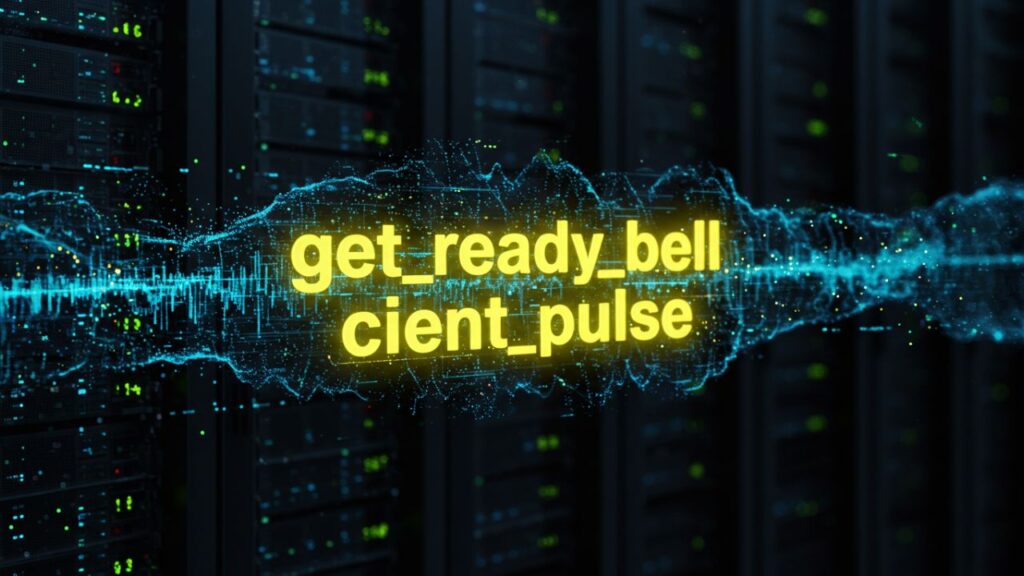Introduction
In today’s fast‑moving digital world, businesses constantly seek tools that can offer timely feedback, meaningful insights, and actionable data. One tool catching attention is get_ready_bell client_pulse—a platform designed to keep businesses tuned into their clients’ moods, behaviors, and expectations. Whether you’re in marketing, customer service, or product development, get_ready_bell client_pulse offers a fresh way to measure and respond to client sentiment. In this article, we explain what get_ready_bell client_pulse does, why it matters, and how to use it effectively.
What Is get_ready_bell client_pulse?
The get_ready_bell client_pulse is a client feedback and sentiment analysis system. At its core, it combines real‑time alerts, client satisfaction surveys, behavioural tracking, and analytics dashboards. Companies using get_ready_bell client_pulse gain the ability to:
-
Capture client feelings via short surveys or reaction buttons
-
Monitor client interactions across touchpoints
-
Receive alerts when client satisfaction drops below a threshold
-
Use dashboards to compare trends over time
This system helps ensure businesses are not reacting too late but staying ahead of issues.
Why get_ready_bell client_pulse Matters
Subheading: Improve Client Retention and Loyalty
One of the top‑reasons get_ready_bell client_pulse matters is its role in client retention. By collecting timely feedback, companies can address friction points before they lead to churn. Loyal clients stay longer, spend more, and often become advocates.
Subheading: Enhance Decision Making with Data
Businesses thrive on data. With get_ready_bell client_pulse, teams can make decisions backed not by assumptions, but by real client sentiments. Whether it’s product design adjustments, customer service improvements, or prioritizing bug fixes, the data offers clarity.
Key Features of get_ready_bell client_pulse
To understand how get_ready_bell client_pulse works in practice, here are its main features.
Instant Feedback Mechanism
Through short surveys or reaction buttons (like a bell‑icon trigger), clients can express satisfaction immediately after interaction. This minimizes feedback bias because reactions are fresh.
Alert System
With thresholds set (e.g., satisfaction score falling below 3 out of 5), the alert system notifies designated team members. The “bell” in get_ready_bell client_pulse symbolizes this alert function.
Analytics Dashboard
Visual reports show trends over days, weeks, or months. Deep‑dive capabilities allow filtering by customer segments, channels, or product lines.
Customization and Integration
You can tailor surveys, branding, and questions to your business tone. Integration with CRM systems, helpdesk software, or chat platforms ensures that feedback collected by get_ready_bell client_pulse flows into existing workflows.
How to Implement get_ready_bell client_pulse Successfully
Step 1: Define Goals and Metrics
Before deploying get_ready_bell client_pulse, clarify what you hope to achieve: increase satisfaction score, reduce support times, increase retention, etc. Choose relevant metrics like NPS, CSAT, or CES.
Step 2: Select Touchpoints
Decide where feedback will be collected: post‑purchase, after support tickets, at key user milestones. Each touchpoint helps build a complete picture.
Step 3: Configure Feedback Instruments
Design short surveys or reaction icons. With simplicity is vital—keep questions few, clear, and actionable.
Step 4: Set Alert Rules
Set thresholds for alerts so teams can act quickly. For example, when a low score appears, a support lead is notified. This makes get_ready_bell client_pulse not just reactive but proactive.
Step 5: Review Data and Take Action
Use the analytics dashboard to see trends and root causes. Initiatives like training, process improvement, or product changes should follow the insights
Benefits and Challenges
Benefits
-
Real‑time insight: Rapid feedback allows quick fixes.
-
Higher client satisfaction: Identifying pain points early leads to better experiences.
-
Better allocation of resources: Teams focus on what matters to clients.
-
Stronger competitive edge: Companies who listen get ahead.
Challenges
-
Survey fatigue: Over‑asking can annoy clients. With it’s essential to space out feedback requests.
-
Data overload: Too much information without clear analysis can overwhelm. Filter wisely.
-
Integration complexity: Tying into legacy systems may need technical work. Ensure the platform supports your existing tools or budgets for onboarding.
Best Practices for Using get_ready_bell client_pulse
-
Keep it short and relevant. Only ask what helps you improve.
-
Timely follow‑ups. When clients report low satisfaction, follow up swiftly.
-
Close the feedback loop. Let clients know their feedback led to change.
-
Segment analysis. Look for patterns among client subgroups.
-
Maintain consistency. Regular feedback collection is more valuable than sporadic bursts.
Case Study: Real‑World Example
Imagine an online retail company that implemented after noticing complaints about delivery delays. They added feedback forms post‑delivery, set an alert for scores under 3, and saw a spike in low ratings. Because alerts came immediately, the operations team identified and corrected issues with their shipping partner. Within six weeks, customer satisfaction rose by 25%, return orders dropped significantly, and repeat purchase rate increased. This shows how can drive real results.
Conclusion
To stay ahead in competitive markets, businesses must listen to their clients proactively, act on feedback rapidly, and measure their success over time. offers a structured, actionable way to do exactly that. By defining clear goals, implementing it carefully, and using insights wisely, can become a powerful tool in enhancing client experience, boosting loyalty, and driving growth.





